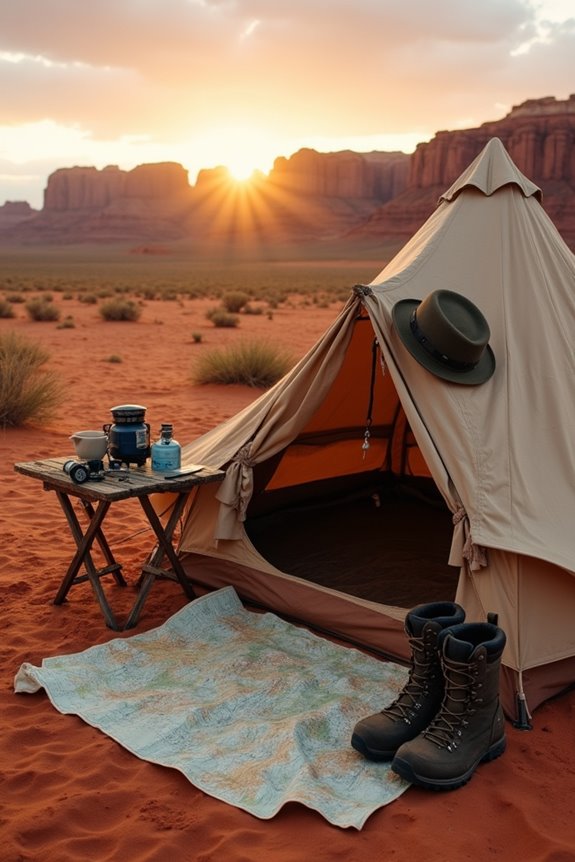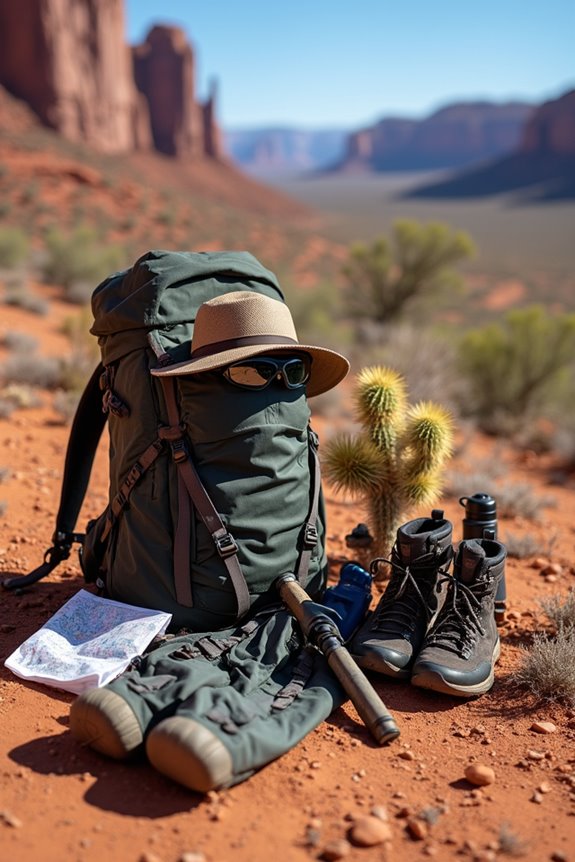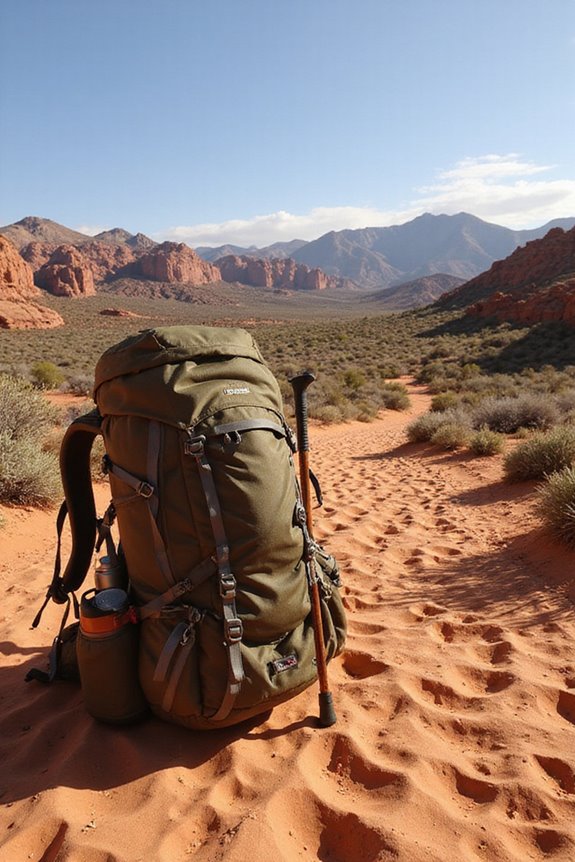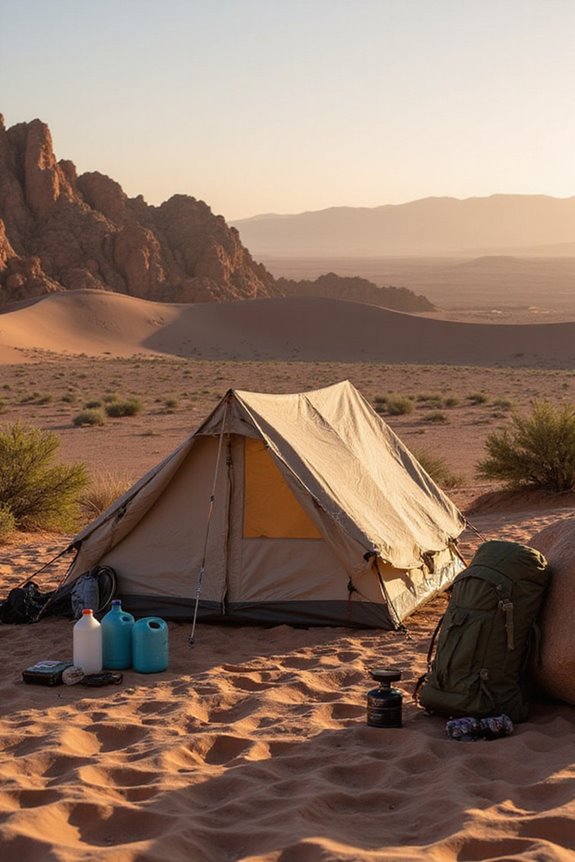When we’re heading out for desert camping, hydration is our top priority! We should each drink a gallon of water daily and sip regularly to fight dehydration. Lightweight shelters like tarps are great for quick setups, while cozy sleeping bags can keep us warm on chilly nights. Don’t forget sun protection with long sleeves, hats, and sunscreen! Plus, a reliable GPS helps us navigate those twisting trails. Stick around, and we’ll explore more tips to make your desert adventure unforgettable!
Key Takeaways
- Carry at least one gallon of water per person per day, plus extra to prevent dehydration.
- Use lightweight, breathable clothing and sun protection to stay comfortable in harsh desert conditions.
- Set up shelters away from flood zones, using tarp shelters or lightweight tents for insulation against chilly nights.
- Plan simple meals, bring non-perishables, and utilize portable stoves to minimize fire risk and conserve resources.
- Practice Leave No Trace principles by respecting wildlife and minimizing your environmental impact.
Hydration Essentials for Desert Camping
When it comes to desert camping, water is your best friend—so let’s chat about how to stay hydrated out there! We all know dehydration can sneak up on us faster than a cactus in the dark. To combat this, we should carry at least one gallon (3.8 liters) of water per person per day, plus extra just in case. We love using collapsible containers and hydration bladders for easy transport!
But don’t rely solely on pre-purified water; we should pack water purification tools too. It’s like bringing a security blanket—keeping us safe from the shifty desert water. For maximum safety, look for filtration efficiency levels that remove over 99.9999% of harmful bacteria and viruses from water sources you might encounter. Remember, hydration strategies are vital! Let’s sip water every 15-20 minutes during activities and keep an eye out for dehydration symptoms. Stay cool out there!
Choosing the Right Shelter and Sleeping Gear
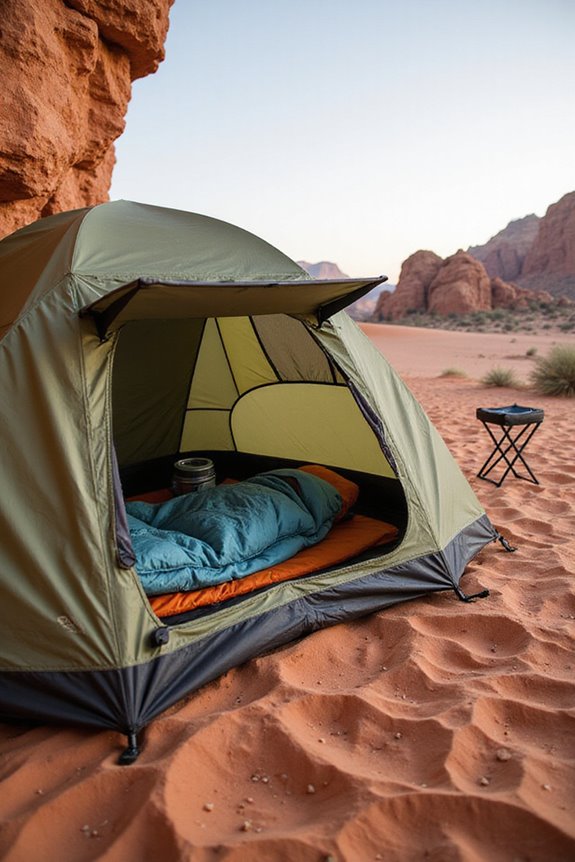
Selecting the perfect shelter and sleeping gear can make or break our desert camping experience—after all, we need to feel safe and comfy to enjoy those breathtaking views! When we’re out there, tarp shelters are our best friends, offering quick, breathable shade under the relentless sun. As for sleeping bags, let’s choose ones rated for chilly desert nights—they really save us from waking up like popsicles!
We should also consider lightweight tents that can withstand strong winds. A sleeping pad is essential too; it keeps us warm from that cold, unforgiving ground. Don’t forget: setting up our shelter wisely away from those flash flood zones can be a game changer. For the best protection in unpredictable desert weather conditions, look for tents with robust waterproof designs that offer minimum ratings of 3000 mm. Let’s embrace the freedom of the desert while staying cozy and safe!
Essential Clothing and Personal Items

Packing the right clothing and personal items is key to making our desert camping trip enjoyable and safe! We’ll want to choose lightweight, breathable fabric types like synthetic fibers or merino wool. Cotton? Forget it! Long-sleeve shirts and light pants will keep us cool while providing excellent sun protection. Think UPF-rated gear—those rays don’t stand a chance!
Don’t forget a wide-brimmed hat, some UV-protective sunglasses, and a trusty bandanna for your face. We can’t overlook comfy, moisture-wicking socks, either. Oh, and let’s bring insect repellent—it’s a desert playground, not a bug buffet! Finally, sunscreen and hydration gear are our best friends in this arid paradise. Look for shirts with UPF 50+ protection that shield your skin from harmful UV rays during long hikes in sunny desert conditions. Let’s chase that adventure!
Cooking and Food Supply Considerations
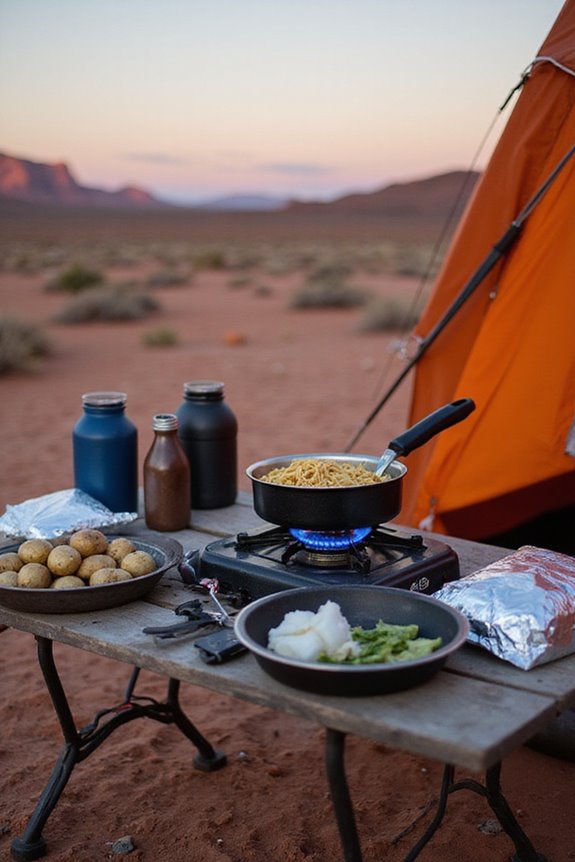
Cooking in the desert can feel like a delightful challenge, especially when we’re crafting meals amid stunning landscapes and sunset vistas. Let’s talk meal prep! Planning our dishes ahead not only cuts down on unnecessary packing but also allows us to enjoy more freedom to explore. We love simple one-pot meals or foil-packet dinners—they’re perfect for camping!
When it comes to food storage, we should stash perishables in coolers and pack our delicious non-perishables like nuts and dried fruits for energy. Sealing our food tightly protects against pests. And hey, don’t forget the hydration—we need at least a gallon per person daily! Bringing a reliable water filter ensures you can safely refill from natural sources when your supplies run low. With a little savvy planning, we’ll be cooking up delicious memories under the stars!
Navigation and Safety Gear
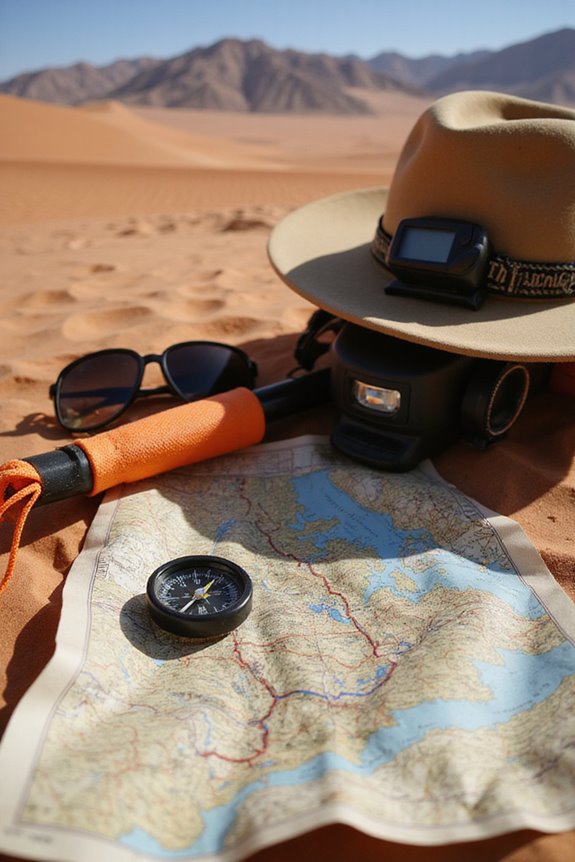
As we gear up for our desert adventure, knowing how to navigate this breathtaking but often featureless landscape is absolutely crucial. Map reading skills become our best friends; combining physical maps with a trusty compass guarantees we’re not just wandering aimlessly like lost tumbleweeds! Portable GPS devices bring precision to our journeys, but let’s not forget those backup tools, like printed maps, just in case technology fails.
For safety, communication gear is key! Two-way radios let us stay connected, and satellite phones provide that reassuring lifeline in remote areas. Plus, packing an emergency locator beacon means we can send distress signals if we run into trouble. Consider the ACR ResQLink 400 with its compact 5.3-ounce design and powerful distress signal capabilities for quick rescue operations in emergency situations. So, let’s embrace the thrill of exploration while staying smart and safe in the desert!
Environmental and Comfort Factors
When we venture into the desert, understanding the environmental and comfort factors is key to having an unforgettable experience—trust me! Selecting the right campsite is vital; we should avoid fragile areas and stick to durable surfaces like gravel and sand, protecting the delicate desert ecosystem. Plus, remember to pack a UV-protective shelter to escape that blazing sun—it’s a lifesaver!
We need to carry way more water than we think—seriously, those scarce water sources can be dodgy! Keeping ourselves hydrated is essential, so let’s monitor our water intake and keep our shelters well-ventilated. Finally, we’ll laugh at the wind if we secure our tent firmly; after all, nobody wants to chase their shelter across the dunes!
Planning for Temperature Changes
Camping in the desert can be a true adventure, but managing those wild temperature changes is part of the thrill! We need to embrace temperature management as we set out on our journey. During the day, it’s scorching—over 100°F (38°C)—and at night, we might find ourselves shivering as temps plunge below freezing. Don’t worry; we can tackle those seasonal variations together!
Let’s layer up: moisture-wicking base layers by day, cozy fleece jackets by night. We’ll schedule our hikes during cooler hours, and trust me, midday naps in the shade are a game-changer. Remember to hydrate and pack those extra blankets for unexpected chills. Staying prepared is key to our desert freedom! Let’s conquer those temperature swings like the adventurers we are!
Wildlife Awareness and Food Storage
While we might dream of starry nights and stunning landscapes, let’s not forget the wildlife lurking in the shadows of our desert adventure! Coyotes, foxes, and even the occasional bear could be drawing closer, attracted by the enticing aromas of our food. To keep wildlife encounters at bay, we must prioritize our food storage.
Securing food in airtight containers or hanging it high can make all the difference. We like to set up cooking areas at least 200 feet away from our tents. And remember, a clean campsite is our best friend! Let’s respect these beautiful animals and minimize any reason for them to pay us a visit. After all, nothing says “freedom” like enjoying nature, unbothered by curious critters!
Leave No Trace Principles in the Desert
Exploring the vast beauty of the desert can feel like stepping into another world, but we’ve got to guarantee we leave it just as pristine for those who come after us! Embracing Leave No Trace principles is key to protecting fragile desert ecosystems. We can start by camping on durable surfaces; those beautiful rocks and sands deserve our respect!
Packing out everything, including our leftovers, assures we don’t contribute to litter. And seriously, let’s leave those cactus pads in place—trust me, they’ll thank us later!
Using stoves instead of campfires is a game-changer, conserving resources and giving us more freedom to roam. Together, let’s embrace sustainable practices that keep this wild paradise thriving for generations to come!
Frequently Asked Questions
What Should I Do if I Encounter a Snake While Camping?
If we encounter a snake, let’s stay calm and back away slowly, remembering snake safety. Always alert the group without panicking. We can enjoy nature while respecting its inhabitants, keeping our freedom intact.
How Can I Tell if the Water Source Is Safe to Drink?
We can tell if a water source is safe by inspecting its clarity and presence of pollutants. Using filtration methods and proper water purification techniques guarantees we stay healthy while enjoying our freedom in nature.
Are There Specific Desert Plants I Should Avoid?
We should seriously scrutinize succulent species to guarantee safe sailing during our desert escapades. Cactus identification’s essential; some poisonous plants can pose peril, so let’s stay savvy and steer clear of danger!
What Should I Do About Trash While Camping?
When it comes to trash disposal, we must embrace Leave No Trace principles. Let’s consolidate waste, pack out everything, and avoid burning trash. Together, we can preserve nature’s freedom for all to enjoy.
Can I Use My Phone for Navigation in the Desert?
Our phones are like modern compasses, guiding us through the desert’s vastness. With navigation apps and careful phone battery management, we can explore freely, but we must prepare for the unpredictable beauty ahead.

